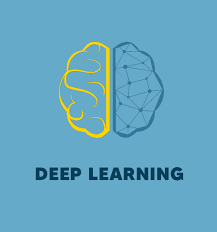Description
Introduction
Onyx is a powerful framework for building data-driven applications, particularly in the realms of data analysis and machine learning. However, to unlock its full potential, integration with other data tools and systems is often necessary. This guide provides a hands-on approach to integrating Onyx with various data tools, enhancing functionality and enabling seamless data workflows. By following the practical examples and best practices outlined in this guide, developers can create a more robust data ecosystem.
Prerequisites
To effectively utilize this guide, readers should have:
- Basic knowledge of Onyx and its architecture.
- Familiarity with programming languages like Python or Java.
- Understanding of APIs and data integration concepts.
- Access to a working Onyx environment and the tools to be integrated.
Table of Contents
- Understanding Integration in Onyx
1.1 Importance of Data Tool Integration
1.2 Overview of Integration Patterns
1.3 Commonly Used Data Tools and Technologies - Setting Up Your Environment
2.1 Installing Onyx and Required Tools
2.2 Configuring APIs for Data Access
2.3 Establishing Connectivity Between Tools - Integrating Onyx with Databases
3.1 Connecting Onyx to SQL Databases(Ref: Onyx for Machine Learning: Implementation Strategies)
3.2 Integrating with NoSQL Databases
3.3 Performing CRUD Operations with Onyx - Working with Data Warehouses
4.1 Connecting to Data Warehousing Solutions (e.g., Snowflake, BigQuery)
4.2 ETL Processes: Extract, Transform, Load
4.3 Querying and Analyzing Data in Onyx - Using APIs for Data Integration
5.1 Understanding REST and GraphQL APIs
5.2 Fetching Data from External APIs
5.3 Pushing Data to APIs from Onyx - Integrating Onyx with Data Visualization Tools
6.1 Connecting Onyx to BI Tools (e.g., Tableau, Power BI)
6.2 Creating Interactive Dashboards with Onyx Data
6.3 Best Practices for Data Presentation - Leveraging Cloud Services for Integration
7.1 Integrating Onyx with Cloud Storage Solutions (e.g., AWS S3, Google Cloud Storage)
7.2 Using Cloud Computing Resources for Enhanced Processing
7.3 Data Synchronization between Onyx and Cloud Services - Case Studies: Successful Integrations
8.1 Real-World Examples of Onyx Integrations
8.2 Lessons Learned from Integration Projects
8.3 Future Trends in Data Tool Integration - Troubleshooting and Best Practices
9.1 Common Integration Challenges and Solutions
9.2 Performance Optimization Tips
9.3 Ensuring Data Quality and Consistency - Conclusion
10.1 Recap of Key Integration Techniques
10.2 Encouragement for Experimentation and Learning
10.3 Resources for Further Development
Conclusion
Integrating Onyx with other data tools is essential for creating a comprehensive and efficient data ecosystem. By following the hands-on approach outlined in this guide, developers can enhance their data workflows, making their applications more powerful and flexible. Continuous exploration of integration possibilities will empower developers to harness the full capabilities of Onyx and contribute to more innovative data solutions.







Reviews
There are no reviews yet.